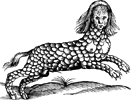Vertebrate Pest Conference: Proceedings

Vertebrate Pest Conference Proceedings: 14th (1990)
Date of this Version
3-8-1990
Document Type
Presentation
Citation
Published in the Proceedings of the 14th Vertebrate Pest Conference, L. R. Davis and R. E. Marsh, editors. Published by the University of California, Davis, 1990
Abstract
Rattus tiomanicus is a serious pest of oil palm plantations in Peninsular Malaysia, feeding on the ripening fruit. R. diardii is a rat of human habitations and has been only an occasional field species, presumably because it cannot compete with better adapted species. A widely used control for R. tiomanicus of proven effectiveness uses maize-based baits containing warfarin at 0.05% in 2 cm3 (14.5 g) wax-bound cubes. These are applied in campaigns at one per palm, replaced on 4 daily rounds, until acceptance has declined to 20%. This "standard method" is applied at about 6-month intervals, and rat populations remain low. In the early 1980s resistance to warfarin began in R. tiomanicus, and from about the same time R. diardii was found more often in oil palms, apparently in the same localities.
This review is of studies of these phenomena. Rat population studies by mark, release, recapture (MRR) confirmed that warfarin baiting was failing against R. tiomanicus, or required prolonged application, whereas second-generation anticoagulants (brodifacoum, bromadiolone, and flocoumafen) were effective. Physiological resistance was confirmed in the laboratory. Direct substitution of second-generation compounds increased the cost of control considerably, and ways to reduce costs were investigated. Smaller bait size presented problems in monitoring bait acceptance, and longer intervals between replacements did not reduce consumption. Half the active ingredient concentration had some promise, but a first-round application of one bait per two palms was most practicable. Bromadiolone baits at 0.005% are now used at half density of one bait per two palms on the first application in areas of warfarin resistance.
Where the problem was first noted, rat populations were compared in areas with and without continued baiting. In an 81-ha plot left unbaited, R. diardii gradually increased and replaced R. tiomanicus during 1982-84. R. diardii then remained predominant until 1989. In the baited plot, once bromadiolone was used (from early 1984) both species were controlled. It is postulated that R. diardii became able to out-compete R. tiomanicus because the genotype of the latter had somehow been weakened in the rapid selection for warfarin resistance.

